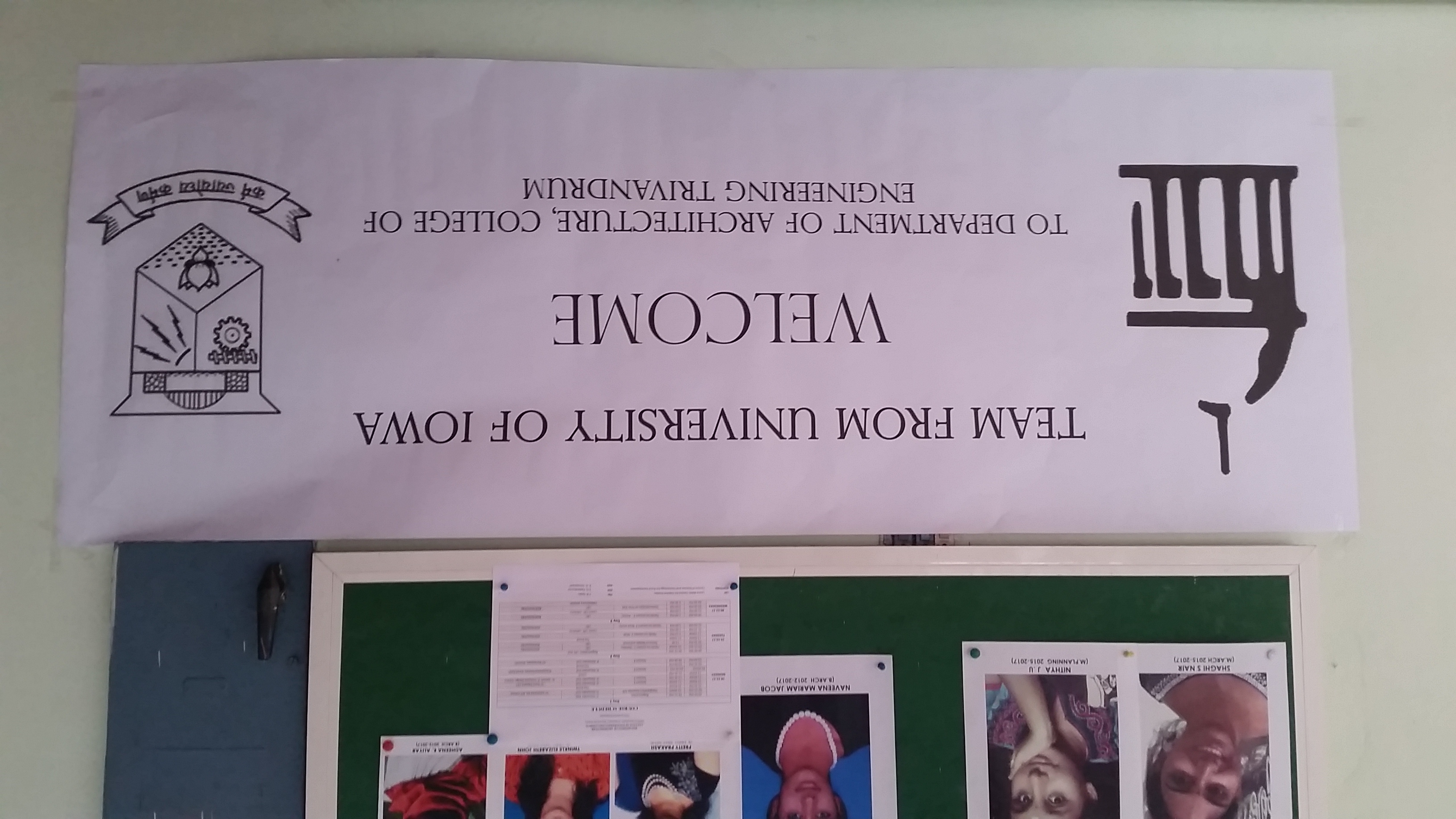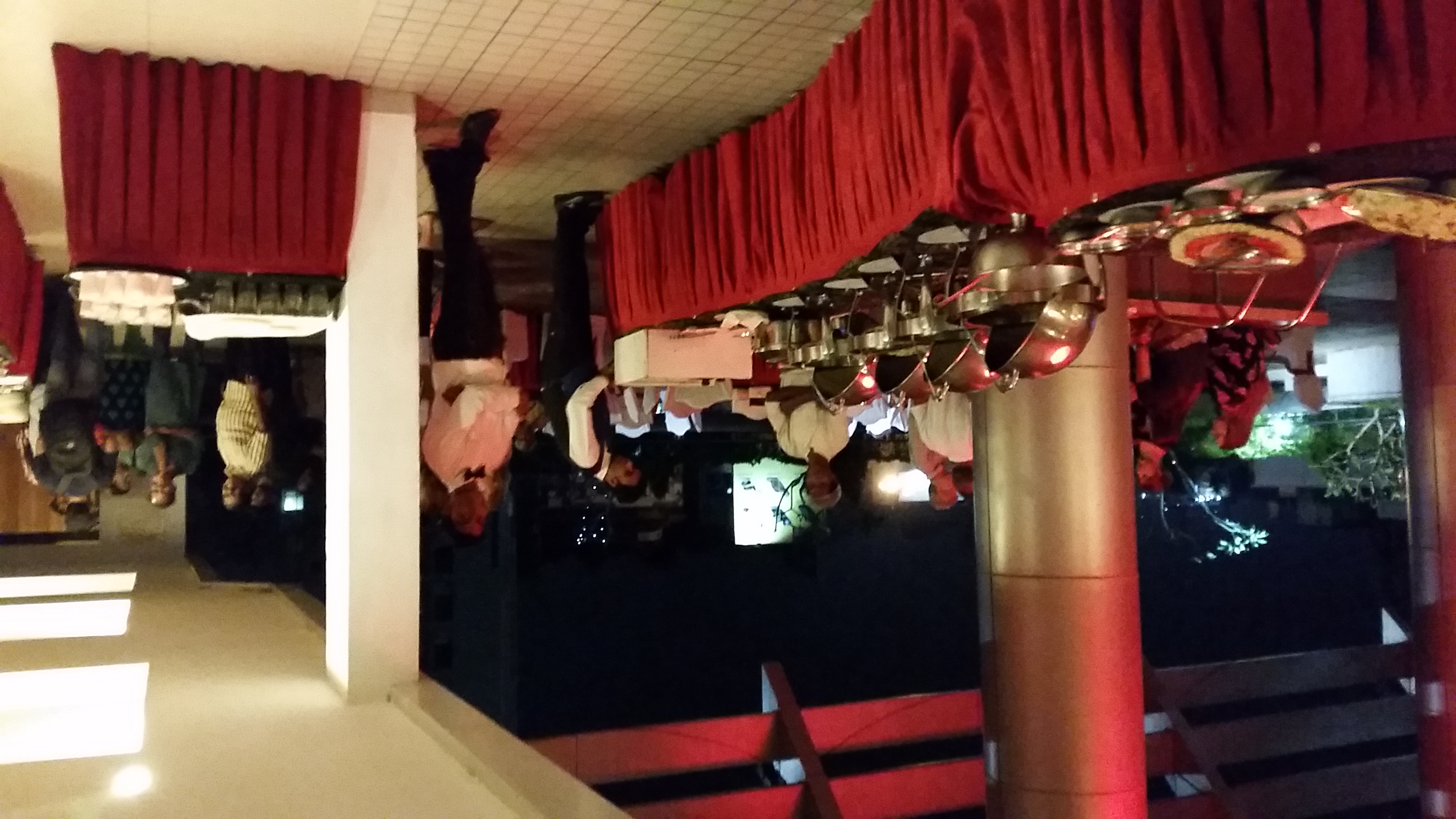01/08/2018 Eleventh Day
Final Day in Trivandrum
The last day in Trivandrum ended with visits to the Center for Development Studies in the morning for a series of lectures and to the College of Engineering, Trivandrum at the University of Kerala in the afternoon. The day was finished with a farewell celebration at the SP Grand Days Hotel with members of Costford, who hosted us while we were in Trivandrum.
Dr. K. P. Kannan gave an introduction on the results from a survey assessing the impacts of the Kudumbashree Mission. Broadly, the survey indicated that women were empowered to go through the Indian bureaucracy, banks were more wiling to lend to the women groups organized under the Mission, women dealt better with difficult husbands, and there was a revival of folk arts and culture. These encouraging results set the tone for the first lecture.
The first lecture delivered by G. Raveendran Nair was entitled “Poverty, Women, and Capability: Kudumbashree Model”. A survey was conducted of a sample of Neighborhood Groups from the Kudumbashree Mission that were in existence for 10 or more years to assess demographics and socio-economic conditions (finances, living conditions, and individual and social capability improvements). A total of 350 Neighborhood Groups (5,565 households and 23,398 members) were surveyed. The majority of the respondants (57.6%) were middle-aged between 35 and 54 and married (78.2%). However, their educational levels were low, the majority were only educated up to middle school (64.8%). Household sizes averaged around 4.1 persons. When the survey considered the improvements in the family assets, the impacts of the Kudumbashree Mission and the general economic improvements in India are apparent. Forty-five percent or so of the households had one or more transportation vehicles, nearly 85% of households have mobile phones, and about 74% of households converted to gas stoves. Later questions about the importance of mobile phones revealed that communication was the most important for these women because they exist within a tight social network and they need to communicate with others to ensure domestic duties are completed before they can go and work as wage-earners or for themselves. Indeed, 49% of women surveyed reported they did not conduct any economic activity. This can be explained by their continued pre-occupation with domestic duties but does not reveal that they also participate in part-time and irregular employment. Despite their increased proletarianization, an astonishing amount of the women (71%) have outstanding loans. I was not able to ask more about this. Perhaps most important, women reported that they were “confident” in their feelings of self-worthiness, an increase from 4.9% to 44.9%. Women contributed their success and achievements to group work, mutual help, feelings of security, government assistance, and the support from family members.
Continuing on the topic of women empowerment, Aleyamma Vijayan from the Sakhi’s Women’s Resource Center gave a presentation on Women and Development in Kerala. The main thrust of her argument was that although the general welfare indicators are promising, the non-conventional indicators are still disappointing for women. This is not only within Kerala, but also part of the wider global trends. A few of the main points I took away was her observation that women in Kerala internalize patriarchal values and that the trend is to fear women’s sexuality and to control it. I asked about sexual and family planning education in schools and was surprised to learn that due to the conservative teachers and lack of good curriculum, not much education is conveyed to students. The overall practice is still preaching morality and abstinence. I was also surprised to hear about the limited availability of family planning to those who are not married couples. Rather than having young people go retrieve family planning devices from general society, schools should pioneer offering family planning to its students. In the political realm, while 50% of local government seats are reserved for women, this practice is not sustained throughout the higher levels of government. The United States, like Kerala and also France, should legislate to ensure that 50% of all elected government official positions should be reserved for women.
The last presentation was delivered by Dr. C. S. Venkateswaran on Arts and Culture in Kerala. He elaborated on the openness and hospitality of Keralan culture and based its cosmopolitan nature on the region’s historical nature of maritime trade. By and large, Keralan culture receives more than it exports, but the blending of cultures in Kerala is a form of hybridity. What would require more research in how Keralan culture contributed to the initial rise of the first elected Communist government. Keralan traditional culture emphasis on the collective through percussion assemblies and team boat races may provide a start. I asked Dr. C. S. Venkateswaran to recommend some books on Communist propaganda in Kerala for me to further research the mobilization of the people and the subsequent rise of the Community Party.
Ending the round of presentations, we went to the College of Engineering, Trivandrum at the University of Kerala for Jerry to deliver a talk on affordable housing in the United States for students and for some post-graduate planning students to present their projects. Overall, the quality of their projects was really good and something for me as a planning student to strive towards. I was equally impressed by the models on urban form the students had in their studio upstairs. That being said, I need to look more into architecture and urban form to gain a more well-rounded planning education.

With that, the educationally-filled day was concluded with a celebration farewell dinner at SP Grand Days with members of Costford. I was expecting some more intermingling and mixing, but cliques quickly formed and the students and members of Costford sat and ate separately. However, before the dining, I was able to talk with K. P. Kannan on one of his work comparing Kerala, India and Jiangsu, China. I find the comparison very intriguing and would like to find and read it.
